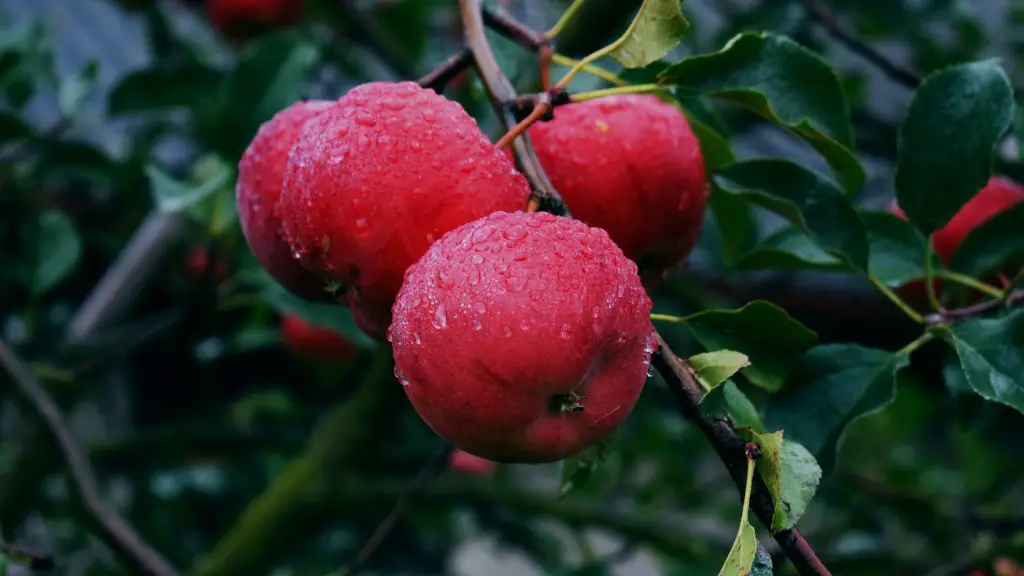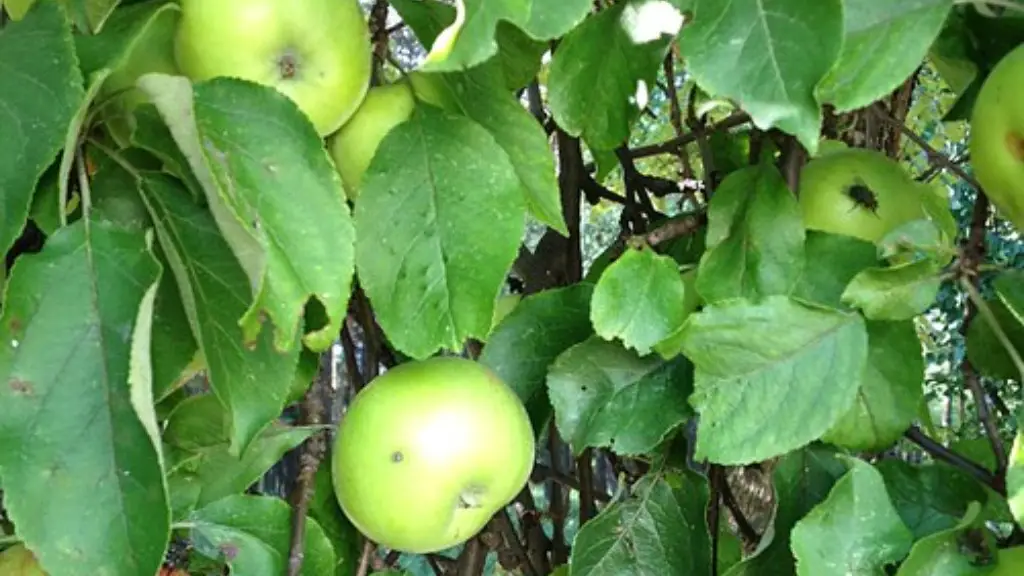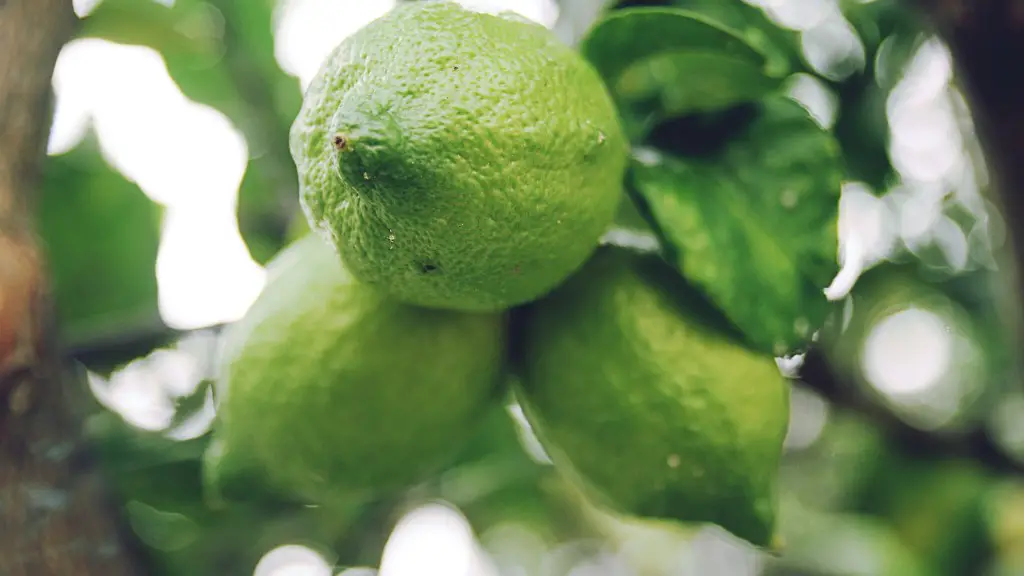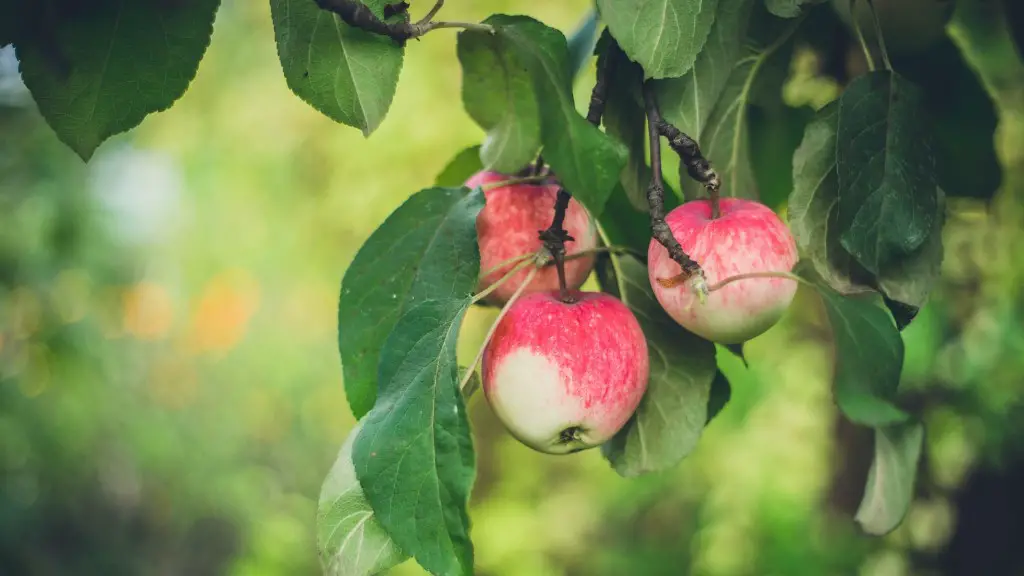Pruning a Fuji apple tree is an important part of maintaining healthy growth and production of fruit. For anyone who has a Fuji apple tree, it is important to understand the proper techniques when pruning your tree. Here’s an overview of what you need to know to successfully prune a Fuji apple tree.
To begin with, it’s important to start pruning young. Pruning a Fuji apple tree when it’s young will encourage the tree to develop a healthy, open form with branches growing out in all directions, instead of crowded inwards. It’s important to prune your tree each year to prevent overcrowding of the branches and limbs.
Also, keep in mind that pruning around the main stem is not necessary, because it encourages vegetative growth, instead of fruit production. Pay attention to root pruning, too, as this should be done during the early years of your tree’s life in order to control growth. This should be done carefully, as over-pruning the roots can damage the growth and health of your tree.
When pruning your Fuji apple tree, use sharp pruners or curved blades, as these can make neat, straight cuts. Make sure that the cuts are clean and smooth, which will help the tree to heal naturally. As you prune, start on the lowest branches going upwards, and then go ahead with the inner branches. Prune away any broken or dead branches, in order to keep the shape of the canopy of the tree open.
Furthermore, pruning should be done in combination with thinning out the branches. Focus on only keeping well-spaced healthy limbs and branches, and use your pruners to cut out any diseased, weak, crowded, or inwardly growing branches. A well-thinned out tree will also provide better aeration and sunlight penetration, which can help your tree to thrive.
Finally, make sure to keep the center of your tree open, by cutting out a few of the large branches near the top center. This will help the shape of the tree’s mainframe stay well balanced and strong, while still allowing for evenly distributed sunlight and air flow. Once you’re done pruning, don’t forget to apply mulch as it will help keep weeds away and protect the roots of your apple tree.
Pruning During the Summer Months
Pruning during the summer months, July and August, can help encourage better fruit production. Pruning in the summertime helps to tailor the growth of the tree, and control whether the tree grows more vigorously or not. During the summer months, when the tree has plenty of leaves and is actively growing, it’s important to avoid pruning too much, as this could retard the growth of your tree, as well as its fruit production.
During the summertime, focus on taking away any dead wood, in order to protect the tree, and also cut away any diseased limbs. If your tree is overgrown, then consider carefully pruning away some of the inner branches, as this can help to improve air circulation and the overall shape of your tree.
Don’t forget to cut away any vertical branches that are competing for light and not producing fruit, or those that are pulling away from the interior of the tree. Finally, make sure to always check the ends of any branches you’re pruning to ensure they’re producing fruit. Keep in mind that in the summertime, when the tree is actively growing, pruning too much may harm the tree’s health and affect fruit production.
Pruning During the Winter Months
When pruning your tree during the winter months, there’s no need to worry about harming fruit production, as the tree isn’t actively growing. Pruning the tree during the winter months, when it’s dormant, gives a great opportunity to shape it and add structure for the coming season. Pruning at this time will also provide protection from common pests and disease.
During winter pruning, it’s important to focus on removing any dead wood, and crossing or rubbing branches. It’s also important to think about the desired shape and size of your tree before proceeding with any cutting. Pruning away a few of the older branches and allowing younger, more vigorous ones to take their place can help to keep the tree healthy and strong.
It’s important to avoid removing more than a third of the live wood, as this can make the tree more vulnerable to disease and pests. Carefully remove any suckers coming up from the base, as this is the best time to get rid of them. Finally, don’t forget to remove any mummified fruit that may still be on the tree, as this can attract pests or spread disease.
Pruning During the Harvest
Pruning during harvest is important as it helps to retain the overall shape and health of the tree. Focus on taking away any old and dying branches. Make sure to prune away any dried up fruit and dying leaves, as these can be breeding grounds for pests or diseases. If needed, make careful and precise cuts to remove any rotten branches or spurs.
Avoid pruning away any of the branches with fruit still on them, as this could reduce the amount of fruit on the tree in the following season. Take special care to remove any covered portions of branches, as this will allow light to reach the innermost parts of the tree. Finally, remember to use sharp and clean pruning shears. This practice ensures that you make neat, clean cuts that will help promote the health of the tree and allow it to heal naturally.
Common Mistakes While Pruning
When pruning your Fuji apple tree, it’s important to keep in mind a few common mistakes that are often made. These include pruning when the tree is young, or pruning too much during summer months. It’s also important to avoid trying to make drastic changes in the shape of your tree during pruning. This can be damaging to the health and productivity of the tree, so it’s important to stick to regular maintenance.
Another common mistake is to prune the limbs incorrectly. This means using too much force and making the pruning cuts ragged and uneven. It’s important to use the right technique, by making precise and even cuts, so that the tree can heal properly. Also, never forget to use a ladder when necessary, so that you can safely prune the higher branches.
When pruning your tree, also avoid pruning it too late in the season, as this can prevent fruit production on the new branches that grow the following season. Finally, don’t forget to fertilize and care for the tree regularly to ensure that it thrives and produces good fruit.




